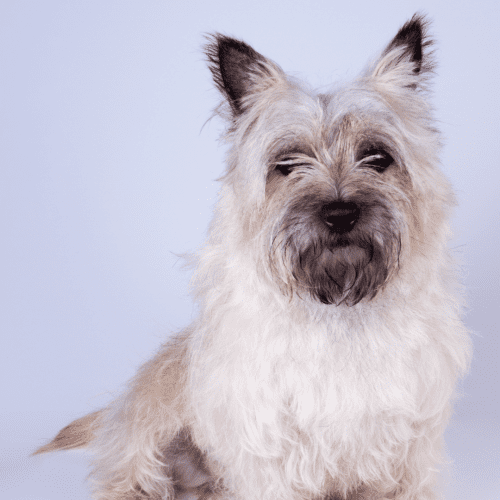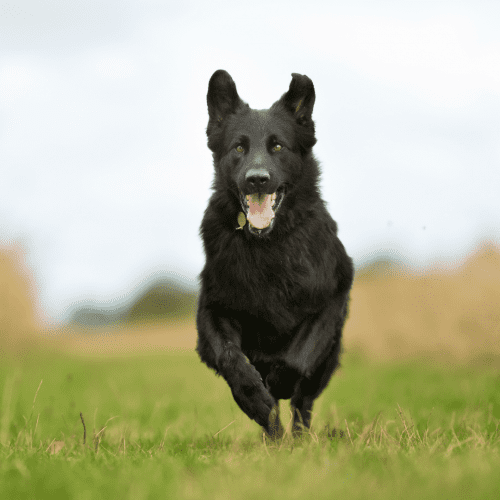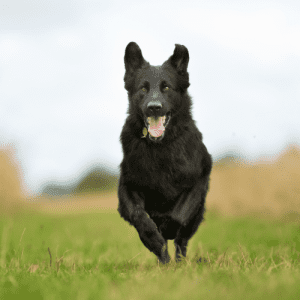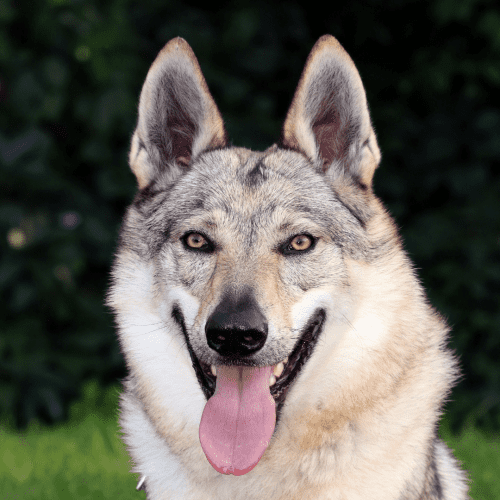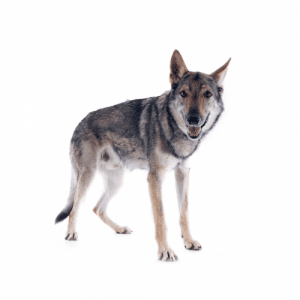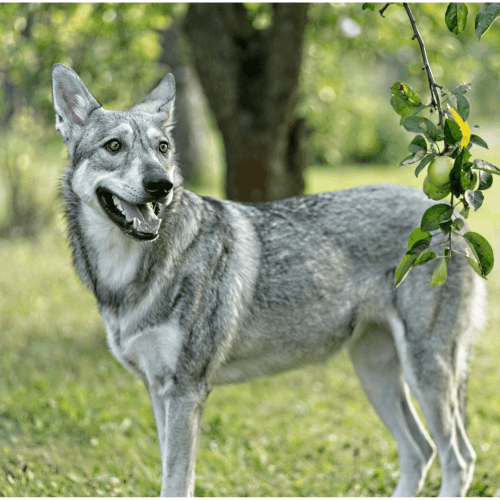Wolf Dogs are a cross between domestic dogs and wolves, and they make incredible companions. These unique dog hybrids are gaining in popularity as people become more interested in owning a dog that is both exotic and familiar. Wolf dogs are incredibly intelligent and often have amazing personalities that make them well worth the effort of this unique dog ownership.
Have you ever wondered if the wolfdog breed truly exists or if it’s just a myth? Well, get ready to uncover the truth about these fascinating canines.
From its distinct characteristics to its origins and usage by humans, the wolfdog breed has captivated the attention of many. But what sets them apart from other dog breeds? Who are the people that connect with these remarkable creatures? And what are some intriguing facts that you may not know?
Prepare to embark on a journey into the world of the wolfdog breed, where the line between domestication and wildness blurs, leaving you eager to learn more.
The Wolfdog dog breed is a unique and fascinating hybrid that combines the characteristics of a domestic dog and a wolf. These dogs possess a mix of traits from both species, resulting in a distinctive appearance and behavior.
Wolfdogs have a strong resemblance to wolves, with their thick fur, erect ears, and piercing eyes. However, they also display typical dog features like a wagging tail and a friendly demeanor.
In terms of behavior, Wolfdogs can vary greatly depending on the percentage of wolf genes they inherit. Some may exhibit more wolf-like behaviors, such as increased independence, heightened senses, and a strong prey drive. This can make training challenging, as they’re known to be more stubborn and less responsive compared to fully domesticated dogs. Consistent and patient training is necessary to establish a strong bond and ensure the Wolfdog’s obedience.
Owning a Wolfdog requires a dedicated and experienced owner. These dogs need plenty of mental and physical stimulation due to their high energy levels and natural instincts. They thrive in spacious environments where they can roam freely and explore. Due to their wolf ancestry, ownership regulations and restrictions may apply in some areas.
Despite their unique characteristics, Wolfdogs have gained popularity in recent years. However, it’s important to note that owning a Wolfdog isn’t suitable for everyone. Potential owners must thoroughly research and understand the breed’s specific needs and responsibilities before considering bringing one into their home.
Wolfdogs possess distinct characteristics that set them apart from other dog breeds. One notable difference is their temperament. Due to their wolf heritage, wolfdogs tend to be more independent and have a stronger prey drive compared to typical dog breeds. This can make training challenges more prevalent for owners. Wolfdogs require consistent and patient training methods that cater to their unique needs.
Another distinguishing feature of wolfdogs is their size and appearance. They often have a wolf-like appearance, with a thick coat, almond-shaped eyes, and a sturdy build. Their size can vary depending on the wolf content in their genetics, ranging from medium to large.
Ownership requirements for wolfdogs are stricter than those for regular dog breeds. Many countries and states have specific laws and regulations regarding owning wolfdogs due to their wild origins. Potential owners may need to obtain special permits, provide secure enclosures, and adhere to additional safety measures.
When it comes to behavior around other pets, wolfdogs can be unpredictable. Their prey drive may cause them to view smaller animals, such as cats or rabbits, as potential prey. It’s crucial for owners to socialize wolfdogs properly from a young age and closely supervise their interactions with other animals.
To explore the dogs that make up the Wolfdog Dog group, it’s important to understand the diverse breeds that contribute to their unique genetic makeup. The Wolfdog Dog group consists of dogs that are bred with wolves. These hybrids are known as wolfdog hybrids. However, it’s important to note that owning a wolfdog hybrid as a pet can be controversial and not suitable for everyone.
The controversy surrounding wolfdog breeding arises from concerns about the unpredictable nature of these hybrids. While some people may find them fascinating and enjoy their unique characteristics, others argue that their behavior can be challenging to manage. Training a wolfdog can be particularly difficult due to their strong instincts, high energy levels, and independent nature. It requires patience, consistency, and experienced handling.
Wolfdogs possess a mix of traits from wolves and dogs, resulting in behaviors that are distinct from typical domesticated dogs. They may exhibit heightened prey drive, territorial instincts, and a strong pack mentality. These unique characteristics can make them unsuitable for households with small children, other pets, or inexperienced owners.
Additionally, there are legal regulations and restrictions on owning wolfdogs in many areas. Some jurisdictions prohibit owning them altogether, while others require permits and specific enclosures to ensure public safety and the welfare of the animals.
The origin of Wolfdogs can be traced back to the deliberate breeding of wolves and domestic dogs. These hybrid dogs have a fascinating history that dates back thousands of years. The exact origin of Wolfdogs is difficult to pinpoint, as their creation wasn’t well-documented. However, it’s believed that early humans began breeding wolves with domestic dogs for various purposes, such as hunting, herding, and companionship.
The evolution of Wolfdogs is a result of this intentional breeding process. Over time, certain characteristics from both wolves and domestic dogs have been passed down to create a unique breed. Wolfdogs typically exhibit physical traits that resemble wolves, such as a strong build, erect ears, and a bushy tail. They also possess behavioral characteristics that reflect their wolf ancestry, including high intelligence, independence, and a strong prey drive.
In terms of behavior, Wolfdogs are known for their loyalty and protective nature. They have a strong pack mentality and thrive in environments where they have a clear leader. However, due to their wild instincts, they can be challenging to train and require experienced handlers.
The conservation of Wolfdogs is an important topic to consider. As a hybrid breed, they face unique challenges in terms of their legal status and protection. It’s essential to ensure that responsible breeding practices are in place to maintain the integrity of the breed and prevent any negative impacts on wolf populations.
Humans have utilized Wolfdogs for a variety of purposes throughout history. These magnificent creatures have been trained for various tasks thanks to their unique abilities and characteristics. Wolf dog training techniques have been developed to ensure effective communication and obedience between the animals and their handlers. Wolfdogs have proven to be valuable in search and rescue operations due to their keen sense of smell, stamina, and ability to navigate difficult terrains. Their agility and intelligence make them excellent candidates for this critical role.
In addition to search and rescue, Wolfdogs have also been used as therapy animals. Their calm and gentle demeanor can provide emotional support and companionship to people in need. Interacting with these animals has been shown to reduce stress and anxiety, making them ideal for therapy programs.
Wolfdog breeding and genetics have been subjects of interest to ensure the preservation and improvement of the breed. Breeders focus on maintaining desirable traits while also considering the challenges of hybridization. Understanding the genetics of Wolfdogs is crucial for responsible breeding practices.
Lastly, there are ongoing conservation efforts to protect and preserve the Wolfdog breed. Conservation organizations work towards safeguarding their habitats and promoting responsible ownership. Education and awareness programs aim to dispel misconceptions and promote the welfare of these unique animals.
People from various backgrounds and interests find themselves drawn to the captivating nature of Wolfdogs. These unique creatures, also known as wolfdog hybrids, possess a mix of characteristics from both wolves and domestic dogs, making them intriguing to a wide range of individuals. Connecting with wolfdogs requires a deep understanding of their complex nature and specific needs.
One type of person who connects with wolfdogs is those who have a passion for wildlife and a desire to experience a closer connection with the natural world. These individuals often seek the companionship of wolfdogs as a way to bridge the gap between the wild and the domestic.
Another group of people drawn to wolfdogs are those who appreciate their striking physical appearance and distinctive traits. The allure of owning a unique and majestic creature is a driving factor for many wolfdog enthusiasts.
Additionally, individuals with a strong sense of responsibility and commitment are often attracted to wolfdogs. Bonding with these animals requires a significant investment of time, energy, and resources. Wolfdog ownership isn’t for the faint of heart, as it requires a deep understanding of their behavior and a willingness to provide the necessary care and attention.
One interesting fact about Wolfdogs is that they often exhibit a high level of intelligence and problem-solving skills. This can be attributed to their genetic makeup, which includes both wolf and domestic dog genes. Due to their wild heritage, Wolfdogs may display certain behaviors that are different from regular domestic dogs. It’s important to understand their unique behavior traits in order to properly care for and train them.
When it comes to wolfdog behavior, these animals tend to be more independent and less inclined to follow commands than typical dogs. They have a strong prey drive and may display instinctual behaviors such as digging, chewing, and howling. Wolf dog training requires a patient and consistent approach. Positive reinforcement techniques work best, as harsh training methods can lead to fear and aggression.
Wolf dog care involves providing a secure and spacious environment, as these animals require plenty of room to roam and explore. Regular exercise is essential to keep them physically and mentally stimulated. Additionally, proper socialization from an early age is crucial for wolf dogs to learn how to interact with other animals and humans.



